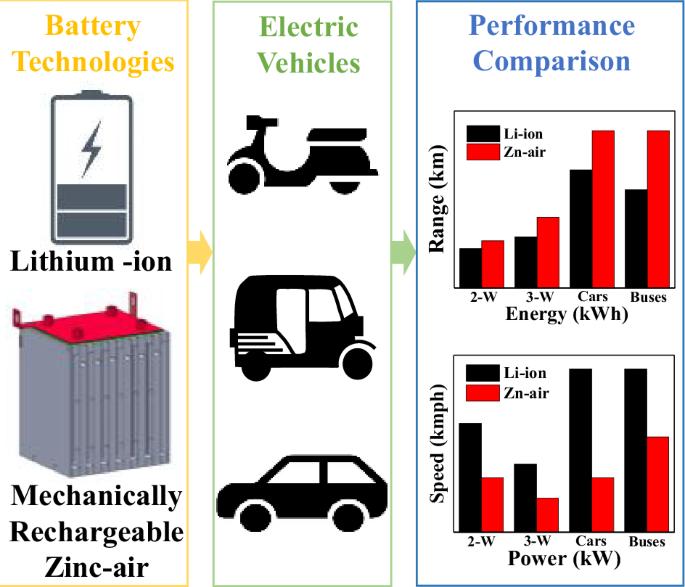用于新兴市场两轮和三轮电动车的锌空气机械充电电池
IF 9.6
Q1 MATERIALS SCIENCE, MULTIDISCIPLINARY
引用次数: 0
摘要
机械可充电锌空气电池因其理论能量密度高而被认为有望为电动汽车提供动力,但一些实际障碍阻碍了它们的应用。了解限制其应用的关键技术障碍,将有助于在电动汽车中快速部署这些电池。本综述分析了由锂离子电池驱动的各种公路电动汽车的性能,并将其与目前开发的可充电锌空气电池进行了比较。我们讨论了在实现机械可充电锌空气电池驱动电动汽车的性能(相当于锂离子电池驱动电动汽车的性能)方面存在的理论限制和特定车辆的障碍。根据所发现的障碍,我们就正极和负极以及电池操作和结构提出了未来的研究方向。最后,我们讨论了这些电池在不同电动汽车领域的应用条件。机械可充电锌空气电池有望为电动汽车提供动力,但其应用受到限制。本综述分析了以锂离子电池为动力的电动汽车的性能,并将这些想法应用于以可充电锌-空气电池为动力的汽车。本文章由计算机程序翻译,如有差异,请以英文原文为准。

Mechanically rechargeable zinc-air batteries for two- and three-wheeler electric vehicles in emerging markets
Mechanically rechargeable zinc-air batteries are considered promising for powering electric vehicles due to their high theoretical energy density, but a few practical hurdles impede their implementation. Understanding the key technical blockades that restrict their implementation will enable quick deployment of these batteries in electric vehicles. This Review analyzes the performance of various on-road electric vehicle segments powered by lithium-ion batteries and compares this with the current rechargeable zinc-air battery development. We discuss the theoretical limits and vehicle-specific blockades involved in achieving the performance of mechanically rechargeable zinc-air battery-powered electric vehicles, equivalent to those powered by lithium-ion batteries. Based on the identified blockades, we present ideas on future research direction on positive and negative electrodes, and battery operation and architecture. Finally, we discuss the conditions under which these batteries can be implemented in various electric vehicle segments. Mechanically rechargeable zinc-air batteries are promising for powering electric vehicles but their implementation is restricted. This Review analyzes the performance of lithium-ion battery-powered electric vehicles and applies these thoughts to vehicles powered by rechargeable zinc-air batteries.
求助全文
通过发布文献求助,成功后即可免费获取论文全文。
去求助
来源期刊

Communications Materials
MATERIALS SCIENCE, MULTIDISCIPLINARY-
CiteScore
12.10
自引率
1.30%
发文量
85
审稿时长
17 weeks
期刊介绍:
Communications Materials, a selective open access journal within Nature Portfolio, is dedicated to publishing top-tier research, reviews, and commentary across all facets of materials science. The journal showcases significant advancements in specialized research areas, encompassing both fundamental and applied studies. Serving as an open access option for materials sciences, Communications Materials applies less stringent criteria for impact and significance compared to Nature-branded journals, including Nature Communications.
 求助内容:
求助内容: 应助结果提醒方式:
应助结果提醒方式:


